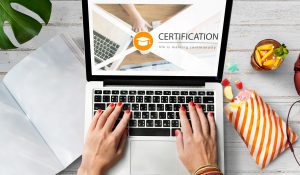
Introduction
Education is most powerful when it is accessible, equitable, and inclusive. In today’s classrooms, diversity is not an exception but the norm—students bring with them different cultural backgrounds, learning styles, languages, abilities, and life experiences. An inclusive classroom is more than a buzzword; it is an intentional educational environment where every student feels valued, respected, and supported in their learning journey.
Creating inclusive classrooms is both a challenge and an opportunity. For educators, it requires rethinking teaching practices, curriculum design, and assessment strategies. For institutions, it means fostering a culture where equity and belonging are embedded in policies and practices. This blog explores why inclusive classrooms are essential, identifies common barriers, and outlines effective strategies educators can use to support diverse learners.
Why Inclusive Classrooms Matter
Inclusive classrooms go beyond accommodating learners with visible differences; they recognize and respond to the full spectrum of student diversity.
Benefits of Inclusive Education:
- Promotes Equity – Ensures that all students have equal opportunities to learn and succeed, regardless of background or ability.
- Improves Academic Outcomes – Research shows that inclusive environments support better performance for both marginalized and mainstream learners.
- Fosters Social Skills and Empathy – Students develop respect for differences and learn collaboration, empathy, and communication.
- Reflects the Real World – Classrooms mirror the diverse societies and workplaces students will eventually enter.
- Encourages Lifelong Learning – Students who feel valued are more motivated, engaged, and open to continued growth.
Common Barriers to Inclusion
Before exploring strategies, it’s important to recognize the barriers that prevent full inclusion in classrooms:
- Stereotypes and Bias – Implicit biases can affect teacher expectations and peer interactions.
- Rigid Curriculum Design – Standardized teaching may not meet the needs of diverse learners.
- Lack of Resources – Schools may lack assistive technologies, trained staff, or culturally relevant materials.
- Language Barriers – Students learning in a non-native language may struggle to keep pace.
- Accessibility Issues – Physical spaces and digital platforms may not be universally accessible.
- Assessment Practices – Standardized testing often fails to reflect diverse learning strengths.
Addressing these barriers is central to building inclusive learning environments.
Key Strategies for Supporting Diverse Learners
- Universal Design for Learning (UDL)
UDL is an educational framework that provides multiple means of engagement, representation, and expression. It ensures that teaching is flexible and accessible to all learners.
Implementation Tips:
- Use a variety of instructional methods—lectures, visuals, hands-on activities.
- Provide options for students to demonstrate learning (essays, projects, presentations).
- Incorporate technology tools to support accessibility.
- Culturally Responsive Teaching
Culturally responsive pedagogy acknowledges students’ cultural identities and integrates them into the learning process.
Strategies:
- Include diverse perspectives and authors in curriculum materials.
- Connect classroom content to students’ lived experiences.
- Create opportunities for students to share cultural knowledge and traditions.
- Use examples and case studies from around the world to broaden perspectives.
- Differentiated Instruction
Differentiation means tailoring teaching methods and content to meet the varying needs of learners.
Practical Approaches:
- Adjust reading materials to different levels of complexity.
- Provide tiered assignments that allow students to work at their readiness level.
- Use flexible grouping for collaboration—sometimes by skill level, sometimes mixed.
- Offer scaffolding for complex tasks while encouraging independence.
- Assistive Technology and Accessibility
Technology plays a powerful role in supporting students with diverse needs.
Examples:
- Screen readers and speech-to-text software for visually impaired or dyslexic learners.
- Captioned videos for hearing-impaired or multilingual students.
- Adaptive devices such as smart pens and alternative keyboards.
- Learning management systems with accessibility features.
- Fostering a Safe and Inclusive Classroom Climate
Students learn best when they feel safe, respected, and valued.
Strategies:
- Establish classroom norms that promote respect and empathy.
- Actively address bullying, microaggressions, or exclusionary behaviors.
- Encourage collaborative learning through group projects and peer mentoring.
- Celebrate diversity through events, discussions, and classroom displays.
- Supporting Language Diversity
Multilingual learners bring unique strengths to the classroom but may face challenges in mastering academic content.
Effective Practices:
- Use visuals, gestures, and realia (objects) to support comprehension.
- Encourage bilingualism and code-switching where appropriate.
- Provide glossaries, translation tools, and scaffolding for vocabulary.
- Pair language learners with supportive peers for collaborative tasks.
- Inclusive Assessment Practices
Assessments should reflect diverse learning styles and strengths, not just standardized formats.
Suggestions:
- Use a mix of formative and summative assessments.
- Provide opportunities for self-assessment and peer review.
- Allow flexible formats—oral presentations, portfolios, digital projects.
- Emphasize mastery and growth over one-time performance.
- Professional Development for Educators
Teachers are central to inclusive education, but they need training and support.
Recommendations:
- Offer workshops on UDL, differentiated instruction, and cultural competence.
- Provide ongoing mentoring and peer collaboration opportunities.
- Create communities of practice for sharing inclusive strategies.
- Encourage reflective teaching to identify and address biases.
- Family and Community Engagement
Inclusive classrooms thrive when families and communities are actively involved.
Approaches:
- Hold parent workshops to explain classroom strategies and invite input.
- Use multiple communication channels to connect with families (translated newsletters, apps, phone calls).
- Involve community organizations in providing cultural, linguistic, and social support.
- Policy and Institutional Support
Sustainable inclusion requires systemic backing, not just individual teacher efforts.
Institutional Strategies:
- Ensure accessibility in physical and digital infrastructures.
- Invest in inclusive curriculum development.
- Establish diversity, equity, and inclusion (DEI) policies and monitoring.
- Provide funding for resources and assistive technologies.
Case Studies of Inclusive Classrooms in Action
Case 1: Finland’s Education System
Finland is renowned for its inclusive approach, where students of varying abilities learn together with strong support systems, individualized instruction, and minimal standardized testing.
Case 2: The New York City Public Schools’ Dual Language Programs
NYC schools have successfully integrated bilingual education programs where both English and another language are used for instruction. This validates students’ home languages while promoting English acquisition.
Case 3: Inclusive STEM Education at MIT
MIT’s Inclusive STEM initiative ensures underrepresented groups, including women and students of color, receive mentoring, accessible labs, and curriculum support, fostering equity in high-demand fields.
Future of Inclusive Classrooms
The concept of inclusion is evolving. With advances in technology, growing cultural diversity, and increased recognition of neurodiversity, classrooms will continue to adapt. Future directions may include:
- AI-Powered Personalization: Smart platforms that adapt to individual learning needs.
- Global Classrooms: Hybrid and virtual models connecting students worldwide.
- Focus on Mental Health: Inclusion will increasingly consider emotional and psychological well-being.
- Intersectional Approaches: Addressing overlapping identities such as race, gender, disability, and socioeconomic status in educational strategies.
Practical Tips for Educators
For teachers seeking immediate steps toward inclusion, here are some actionable tips:
- Learn students’ names, pronouns, and preferred communication styles.
- Regularly check in with students through surveys or discussions.
- Use diverse examples in teaching materials.
- Start small: incorporate one new inclusive practice each semester.
- Reflect on your teaching through student feedback and peer observations.
Conclusion
Inclusive classrooms are not a luxury—they are a necessity for equitable and effective education. By adopting strategies such as Universal Design for Learning, culturally responsive teaching, differentiated instruction, and inclusive assessments, educators can create environments where every learner thrives.
Institutions also play a critical role in providing resources, professional development, and policy frameworks to sustain inclusivity. Ultimately, inclusive classrooms benefit everyone: they not only support diverse learners but also prepare all students for a diverse, interconnected world.
When learners feel seen, heard, and valued, education becomes a transformative experience. And that is the true goal of teaching.



